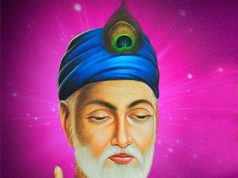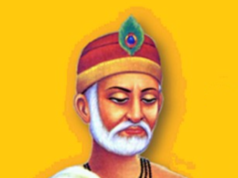The journey of space research in Bharat has been painful still prolific. ISRO’s model of efficient and economic satellite launching is inspiring for the whole world
It was a proud moment for India when Indian Space Research Organisation (ISRO) created a world record on February 15 for successfully launching the PSLV C-37 rocket which carried 104 satellites from seven different countries.
In fact, the story of ISRO itself is an exciting one as how ISRO’s first satellite was taken in a bicycle to launching other nation’s satellite. To further boost the ISRO’s dream, the Centre Government headed by Shri Narendra Modi has provided budgetary provisions so that ISRO just doesn’t stop at Mars but will now go to Venus too. The February 15 mission of ISRO was its 39th and also an occasion for ISRO to break its own record (launching 20 satellites in one go in June 2016).
Our space research activities were initiated in the early 1960’s when applications using satellites were in experimental stages even in the United States. With the live transmission of Tokyo Olympic Games across the Pacific by the American Satellite ‘Syncom-3’ demonstrating the power of communication satellites, Dr. Vikram Sarabhai, the founding father of Indian space programme, quickly recognized the benefits of space technologies for India. Dr. Sarabhai was convinced that the resources in space have the potential to address the real problems of man and society. As Director, Physical Research Laboratory (PRL) located in Ahmedabad, Dr. Sarabhai summoned an army of able and brilliant scientists, anthropologists, communicators and social scientists from all corners of the country to spearhead the Indian space programme.
Since its inception, the Indian space programme has been orchestrated well and had three distinct elements such as, satellites for communication and remote sensing, the space transportation system and application programmes. The INCOSPAR (Indian National Committee for Space Research) was initiated under the leadership of Dr. Sarabhai and Dr. Ramanathan.
In 1967, the first ‘Experimental Satellite Communication Earth Station (ESCES)’ located in Ahmedabad was operationalized, which also doubled as a training centre for the Indian as well as International scientists and engineers.
To establish that a satellite system can contribute to the national development, ISRO was clear that it need not wait for its own satellites to begin application development, while foreign satellites could be used in the initial stages. However, before trying out a full-fledged satellite system, some controlled experiment to prove the efficacy of television medium for national development was found necessary. Accordingly, a TV programme on agricultural information to farmers ‘Krishi Darshan’ was started, which received good response.
Other Milestones in the Journey of ISRO
Aryabhatta, 1975: Named after the famous astronomer, it was the India’s first satellite. It marked a milestone in India’s space programme because it was completely designed in the country and launched from a Russian facility in 1975
Indian National Satellite System, 1983: Popularly known as Insat, the system is a network of satellites that enables communications and broadcasting across the south Asian region. The first satellite in the series was placed into orbit in 1983 that revolutionised India’s television and radio broadcasting, telecommunications and meteorological sectors
Polar Satellite Launch Vehicle, 1993: It was developed in the 1990s and has become the Indian space mission’s most reliable workhorse. The PSLV carried out its first mission in 1993 but its first successful outing was the next year. It launched various satellites for historic missions such as the Chandrayaan and Mangalyaan
Chandrayaan, 2008: Almost a decade ago, our first unmanned lunar probe was launched, a landmark in India’s space mission. Hoisting a Tricolour on the moon, ISRO joined an elite list of just six space organisations to send an orbiter to the moon
Mangalyaan, 2014: India joined an exclusive global club when it successfully launched the Mars Orbiter Mission on a low budget that was 10 times lower than a similar project by NASA. The Rs 450-crore project revolved round the Red Planet and to collect data on Mars’ atmosphere
Indian Regional Navigation Satellite System, 2016: The seven-satellite system is India’s own satellite navigation system which provides services in marine navigation, disaster management, vehicle tracking and fleet management, etc
The next logical step was the Satellite Instructional Television Experiment (SITE), hailed as ‘the largest sociological experiment in the world’ during 1975-76. This experiment benefited around 2 lakh people, covering 2400 villages of six states and transmitted development oriented programmes using the American Technology Satellite (ATS-6). The credit of training 50,000 science teachers primary schools in one year goes to SITE.
SITE was followed by the Satellite Telecommunication Experiments Project (STEP), a joint project of ISRO-and Post and Telegraphs Department (P&T) using the Franco-German Symphonie satellite during 1977-79. Conceived as a sequel to SITE which focused on Television, STEP was for telecommunication experiments. STEP was aimed to provide a system test of using geosynchronous satellites for domestic communications, enhance capabilities and experience in the design, manufacture, installation, operation and maintenance of various ground segment facilities and build up requisite indigenous competence for the proposed operational domestic satellite system, INSAT, for the country.
SITE was followed by the ‘Kheda Communications Project (KCP)’, which worked as a field laboratory for need-based and locale specific programme transmission in the Kheda district of Gujarat State. The KCP was awarded the UNESCO-IPDC (International Programme for the Development of Communication) award for rural communication efficiency in the 1984.
During this period, the first Indian spacecraft ‘Aryabhata’ was developed and was launched using a Soviet Launcher. Another major landmark was the development of the first launch vehicle SLV-3 with a capability to place 40 kg in Low Earth Orbit (LEO), which had its first successful flight in 1980. Through the SLV-3 programme, competence was built up for the overall vehicle design, mission design, material, hardware fabrication, solid propulsion technology, control power plants, avionics, vehicle integration checkout and launch operations. Development of multistage rocket systems with appropriate control and guidance systems to orbit a satellite was a major landmark in our space programme.
In the experimental phase during 80’s, end-to-end capability demonstration was done in the design, development and in-orbit management of space systems together with the associated ground systems for the users. Bhaskara-I & II missions were pioneering steps in the remote sensing area whereas ‘Ariane Passenger Payload Experiment (APPLE)’ became the forerunner for future communication satellite system. Development of the complex Augmented Satellite Launch Vehicle (ASLV), also demonstrated newer technologies like use of strap-on, bulbous heat shield, closed loop guidance and digital autopilot. This paved the way for learning many nuances of launch vehicle design for complex missions, leading the way for realisation of operational launch vehicles such as PSLV and GSLV.
During the operational phase in 90’s, major space infrastructure was created under two broad classes: one for the communication, broadcasting and meteorology through a multi-purpose Indian National Satellite system (INSAT), and the other for Indian Remote Sensing Satellite (IRS) system. The development and operationalisation of Polar Satellite Launch Vehicle (PSLV) and development of Geo-synchronous Satellite Launch Vehicle (GSLV) were significant achievements during this phase.
Congratulations to ISRO on the successful launch of PSLV-C37, carrying a record 104 satellites. This day shall go down as a landmark in the history of out space programme. Nation is proud of this achievement, which has demonstrated, yet again, India’s increasing space capabilities
—President Sh Pranab Mukherjee
Congratulations to @isro for the successful launch of PSLV—C37 and CARTOSAT satellite together with 103 nano satellites!,This remarkable feat by @isro is yet another proud moment for our space scientific community and the nation. India salutes our scientists
—Prime Minister Sh Narendra Modi
RSS hails ISRO’s achievement
Bharat has been a pioneer not only in spiritual sciences but also in empirical sciences. From Aryabhatta and Varahamihara, there has been a long, unending stream of scientists, Bharat has contributed to the world. In recent decades Bharat has made long strides in the field of aeronautic space technology on its own, its successful deployment of 104 satellites into the designated orbit, setting a new record, from Sriharikota yesterday, has, apart from adding one more feather to the cap of ISRO, also announced its rolein Bharat as a strong but benign contender in the field at international level. We take this opportunity to congratulate the authorities, scientists and all others who have been involved in this mission.
Statement of RSS Sarkaryavah Shri Bhayyaji Joshi Released by Gopal Arya
Central Office Secretary, Keshav Kunj Jhandewala, New Delhi
By Guruprasad R, Bengaluru














